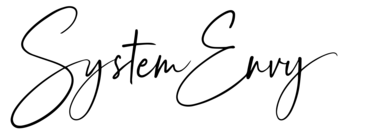Facebook advertising can be THE most cost-effective way to scale your business… or it can be a waste of time and money. You know that we’re big on Facebook ads to scale cost-effectively (obviously!), which is why we constantly come back to one question:
Is your cost-per-lead good?
Because, here’s the thing: if it’s not, you’re doing yourself and your business a big disservice. Luckily, though, there are some key indicators you can look for to check on your cost-per-lead, and there are some ways to optimize that cost-per-lead well.
First things first… what makes sense for YOU and your business?
Cost-per-lead is not going to be the same across the board (not even close). CPL varies drastically depending on tons of things, like the platform you’re advertising on, your industry, your audience engagement, and your offer itself. Over here, we serve digital course creators and we’ll see a CPL lead from $0.30, all the way to $30.00 (depending on all of those factors). We estimate our typical CPL to be around $4-$8.
But, no matter what the cost-per-lead IS, we ask ourselves one simple question:
Does it make sense?! AKA, are people actually buying the offer, OR are they being set up to buy an offer in the future?
See, not every lead is going to be a purchaser. So, if you usually see that you need 10 leads for one purchase, that makes a difference — AKA, say your CPL is $10. If your CPL is $10, your cost-per-sale is going to be $100. While that might be a great margin for a really high-ticket course, it’s not going to be a great margin for a $10 guide.
This is also where you have to start thinking about where your leads are going to — are they instantly making a purchase, or are they signing up for your email list in hopes that they’ll make a later purchase? These things matter when it comes to building engaged customers *and* making smart business decisions, too.
So, here’s how to keep an eye on your cost-per-lead:
This is why we’re so big on tracking over here at System Envy — because great tracking is what helps you stay on top of whether or not people are converting from your funnel (and where, exactly, they are converting from).
Having your pixel set up with the lead and purchase tag is key. You want the lead event on your opt-in confirmation pages, and your purchase event on your sale confirmation page. The best way to do this for tracking is to have this confirmation be a separate page/URL. That way you can test the confirmation of lead or sale by tracking the URL in Events Manager. People wouldn’t be able to navigate to this URL from any other path, so it’s a safe and effective way to get reliable data.
Then, you have to test. And test again. And, you guessed it… TEST SOME MORE. 🙂 By running different campaigns at different price points and CPLs, you can start to see which ones are working better — and you can also see very quickly (hellooo, ads manager) what your benchmarks should be.
—
Over here, we know that Facebook ads can seem confusing — but we’re all about demystifying them to help you rock your business *and* your ad strategy.






0 Comments